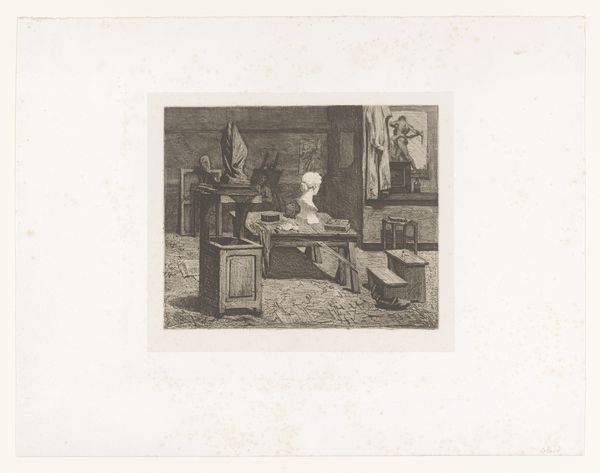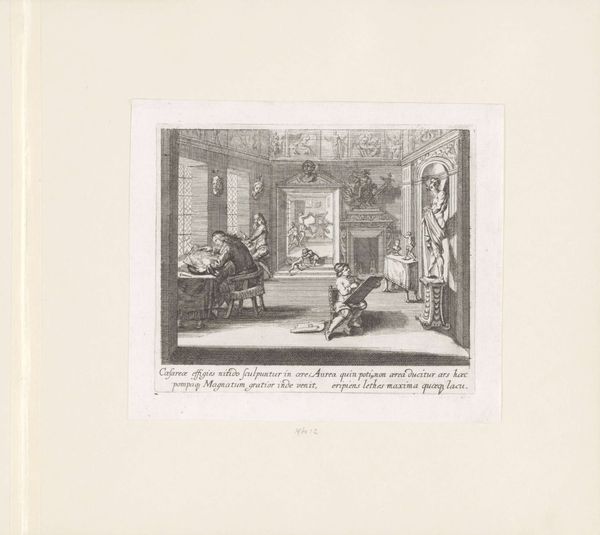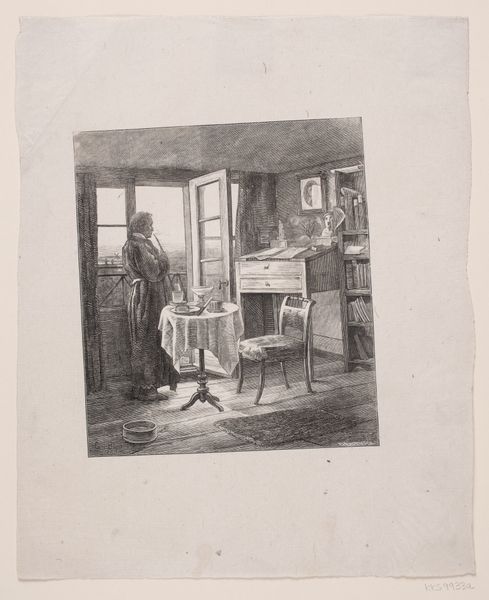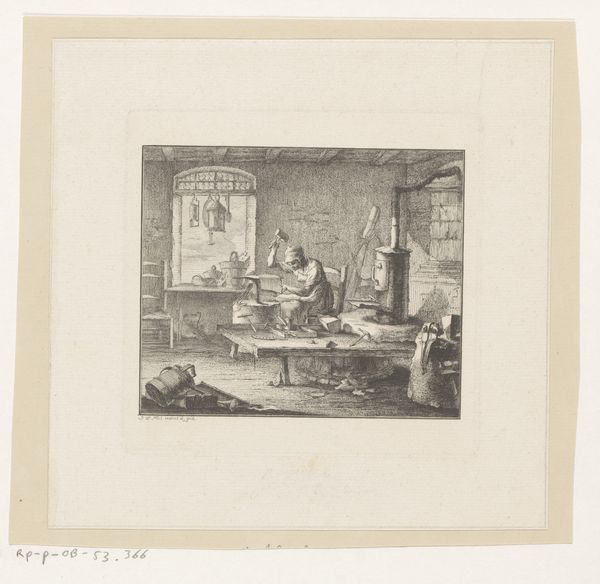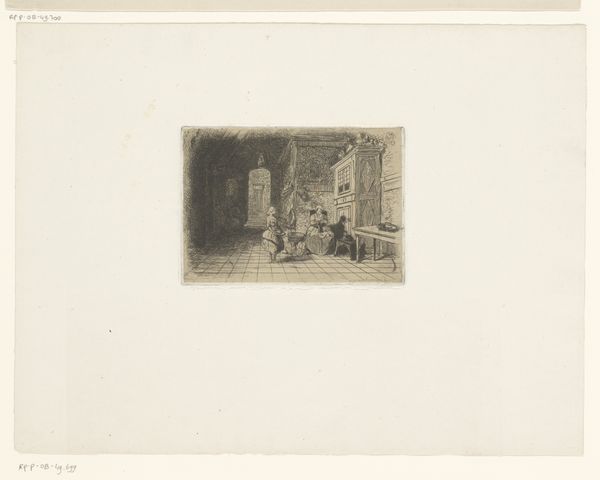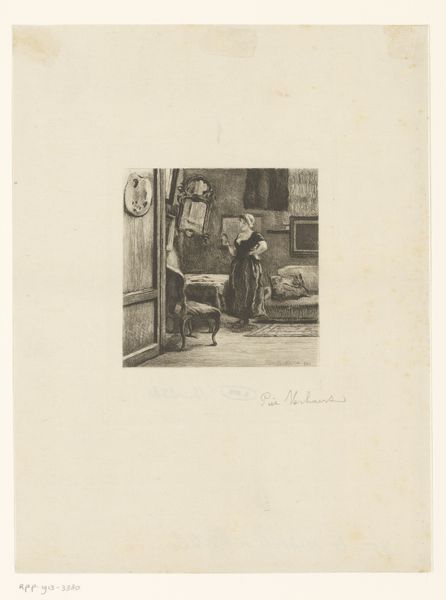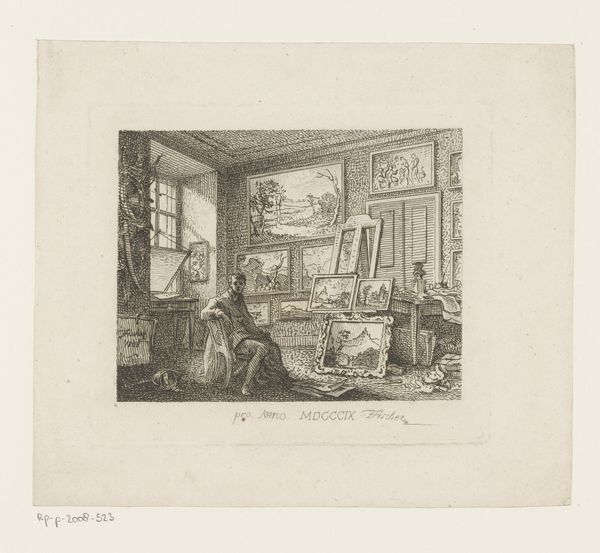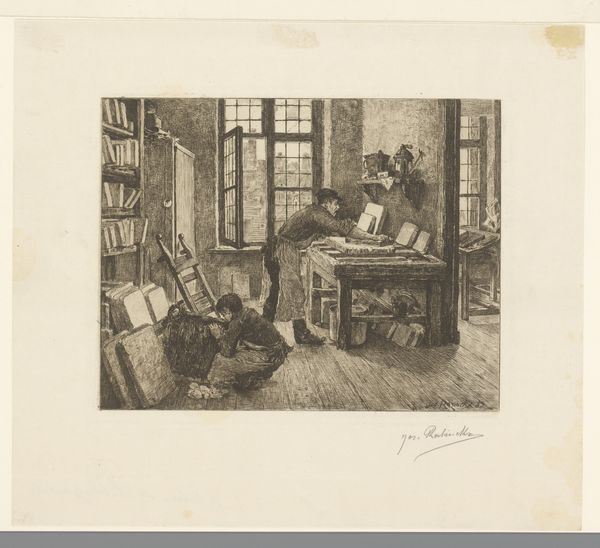
drawing, print, etching, paper, ink
#
portrait
#
drawing
# print
#
etching
#
paper
#
ink
#
genre-painting
#
realism
Dimensions: height 166 mm, width 239 mm
Copyright: Rijks Museum: Open Domain
Editor: Here we have Piet Verhaert's "Interior with a Man Reading, Seated by a Bookcase," an etching from 1885. It's got such a quiet, contemplative atmosphere. What do you see in this piece, especially considering its time? Curator: I see a commentary on the evolving role of the bourgeois intellectual. Etchings like this were popular amongst the growing middle class – easily reproducible and affordable art for the home. What’s particularly interesting here is how Verhaert positions the man within his personal library; knowledge and intellect are becoming increasingly domestic, possessions displayed within one’s private sphere. What kind of power dynamic might that suggest? Editor: That's fascinating! It’s almost like the books themselves are a status symbol, part of the decor. But do you think there’s also an element of genuine appreciation of learning? Curator: It's certainly not mutually exclusive! The realism movement, to which this etching aligns, aimed to depict contemporary life without idealization, suggesting a democratization of subject matter. Reading and access to knowledge weren’t just for the aristocracy anymore; it's part of this individual's daily life. Look how the image democratizes domestic life and its objects as worthy subjects of art. Consider its public function – what image of this burgeoning social class did it create? Editor: I never really thought about realism in terms of democratizing subject matter before. It adds a whole new layer to appreciate the setting! Curator: Exactly. This etching tells us about how artistic mediums became accessible to more audiences. And that art began mirroring their values, literally creating an image for a newly empowered segment of society to see itself. Editor: Thank you, this makes me realize how much more goes into analyzing art beyond just what's on the surface! Curator: Absolutely. By understanding its historical and social contexts, we can really delve deeper into its true meaning.
Comments
No comments
Be the first to comment and join the conversation on the ultimate creative platform.

